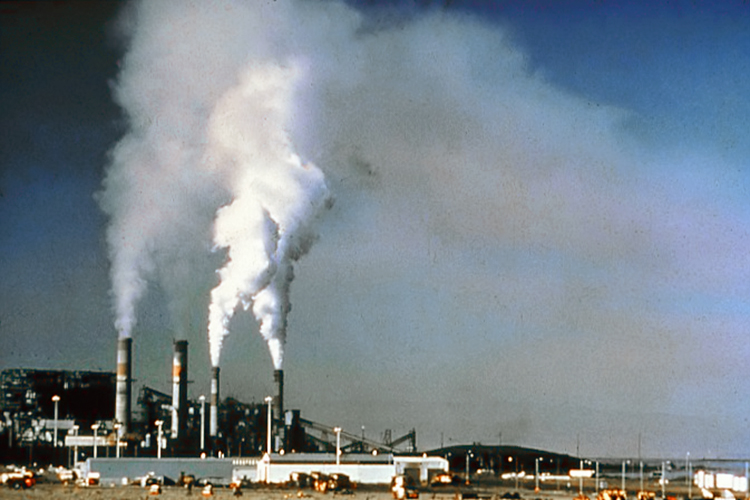“Superpolluters,” a newly identified class of industrial facilities that produce high toxic emissions, disproportionately affect nonwhite, low-income communities, according to a University of Maryland study.
The researchers found that about 5 percent of 16,000 facilities nationally generate about 90 percent of the nation’s toxic emissions risk, said Mary Collins, an environmental sociologist at the State University of New York College of Environmental Science and Forestry. The journal Environmental Research Letters published the results in January.
“There is disproportionate distribution of pollution in the U.S.,” said Collins, who led this research as a postdoctoral fellow in this university’s National Socio-Environmental Synthesis Center. “Looking at these superpolluter communities … the data showed these communities could be considered disproportionately poor or nonwhite.”
The study shows that communities of color and low-income populations face a greater degree of pollution exposure risk, a fact that can help researchers better understand the social systems that might contribute to environmental inequality, Collins said.
Joseph JaJa, a computer and electrical engineering professor who worked on the study, said though his role was primarily dealing with the data and computer science aspects of the research, he was interested in the seemingly “unfair” social science trends they discovered.
Environmental inequality and environmental justice are big topics these days, Collins said, especially when considering problems such as the water contamination in Flint, Michigan. She said it’s important to understand what is happening in these communities so these problems can be addressed.
“From a scientific perspective, the study is very novel and innovative,” said Sacoby Wilson, a professor with the public health school’s Maryland Institute for Applied Environmental Health. “But from a policy perspective, it shows us we have a lot of work to do.”
To find superpolluters, researchers used the Environmental Protection Agency’s Risk-Screening Environmental Indicators data, which account for the risk generated by toxic emissions from industrial facilities across the continental United States.
“We know that some societies pollute more than others, some people or organizations pollute more than others,” Collins said. “We wanted to look at industrial facilities to see if there were some that were substantially worse than others.”
When researchers cross-referenced these data with the U.S. Census, they discovered the link between these facilities and disadvantaged communities, Collins said.
Wilson said the research highlights underlying issues of environmental racism and structural inequality. To address these problems, Wilson said, researchers have to continue to build a better understanding of what caused this inequality.
Collins said this perspective breaks down a huge problem like pollution into smaller, more manageable parts, allowing researchers and policymakers to tackle it with a little more optimism.
“If you’re a decision-maker or a regulator, you might recognize that pollution production is driven heavily by this group of extreme polluters and maybe design policies or programs that target these groups,” Collins said. “Also, if you did clean up those facilities, you could be doing it in places that are traditionally marginalized.”



